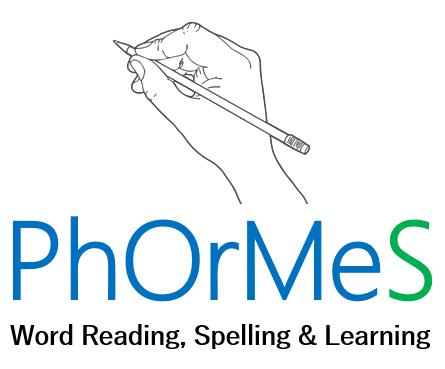Let’s face it: to novice learners of English spelling, some words seem WEIRD!
-
English orthography represents:
speech sounds
c-a-t
morphemes (units of meaning)
at-tract-ion
It also reveals where words have come from
etymology (where words are from)
phone (ph from Greek)
Because English spelling has a rich history of borrowing from many other languages including Norse, French, Latin and Greek, its orthography is much deeper than most other languages.
-
While most spellings can be explained using phonology, morphology and etymology, learning this knowledge can take many years.
And sometimes, words are just written weirdly (e.g. debt… which never should have had a silent b!).
So, in the interim, we teach high-frequency words that have a component that children haven’t yet been taught in the wider spelling scope and sequence.
-
Research on early decoding (and spelling) has indicated that teaching some high-frequency words with irregular spellings is both manageable and beneficial for early learners.
In order to read even the most basic texts, children need to be able to read a small set of ‘irregular’ or ‘weird’ words.
When teaching irregular words, we should teach the parts of the word that are regular, yet highlight the parts that are irregular. From here, practice of reading and spelling these tricky, weird words is key.
-
Scope & Sequence
A sequence from Week 3 of Foundation to the end of Year 6 covering Weird Words from the most frequent 1000 words in English and beyond is taught every day in PhOrMeS.
Paired words
Weird words which follow a similar orthographic pattern are taught together (e.g. was & want, some & come, measure & treasure)
Initial introduction
The word is spoken to children, children repeat the word, word is broken into sounds, letters which represent each sound are written, irregular part of word is highlighted, children read the word several times, children spell the word multiple times over a week.
Reading words as a whole after model
New Weird Words are read by the teacher and then choral read by students. Students are only asked to read Weird Words independently during their final review.
Spelling words using letter names
When spelling Weird Words, students are given letter names to spell these words.
Corrective feedback
Students are given feedback each time they spell a Weird Word and are encouraged to fix up any incorrect spellings.
Review
From Foundation to Year 2, each Weird Word is reviewed for four days after its initial introduction. It is then reviewed 1 week later, 1 month later and 1 term later.
Each Weird Word from Foundation to Year 2 is read a minimum of 26 times.
Each Weird Word from Foundation to Year 2 spelt a minimum of of 8 times.
From Year 3 to Year 6, each Weird Word is reviewed for four days after its initial introduction. It is then reviewed 1 month later and 1 term later.
